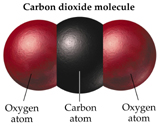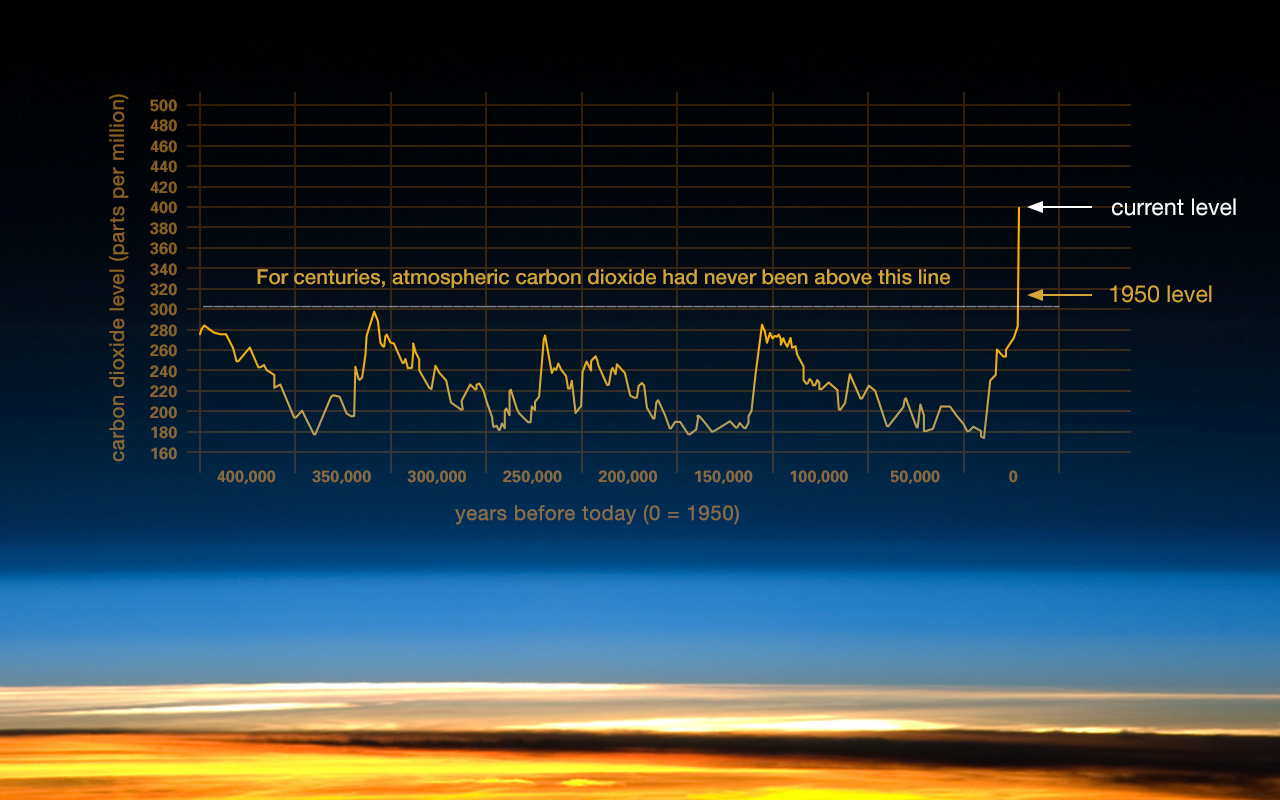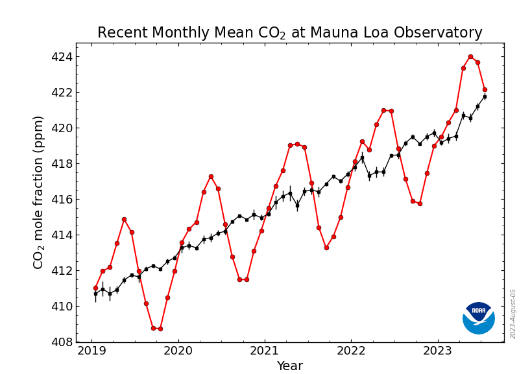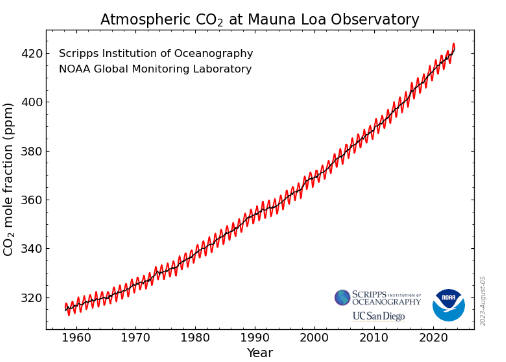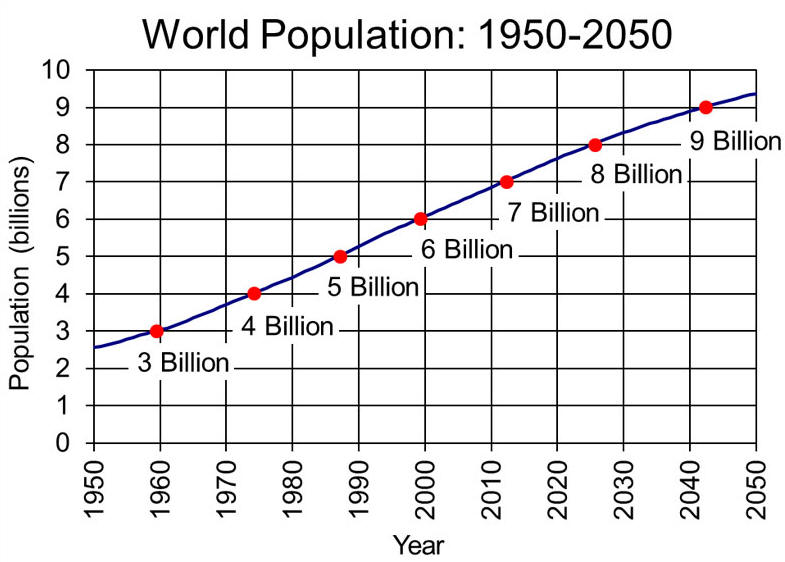
|
||||||||||||
|
|
|
Carbon Dioxide
Carbon Dioxide (CO2) is a colorless, odorless gas consisting of molecules made up of two oxygen atoms and one carbon atom. The CO2 molecule is involved in a complex series of processes called the carbon cycle, where the carbon atom within the molecule moves between many different natural reservoirs.
Carbon dioxide (CO2) is emitted in a number of ways. It is emitted naturally through the carbon cycle and through human activities like the burning of fossil fuels. Natural sources of CO2 occur within the carbon cycle where billions of tons of atmospheric CO2 are removed from the atmosphere by oceans and growing plants, also known as ‘sinks,’ and are emitted back into the atmosphere annually through natural processes also known as ‘sources.’ When in balance, the total carbon dioxide emissions and removals from the entire carbon cycle are roughly equal. Since the Industrial Revolution in the 1700’s, human activities, such as the burning of oil, coal and gas, and deforestation, have increased CO2 concentrations in the atmosphere. Volcanoes release more than 130 million tons of CO2 into the atmosphere every year
This graph, based on the comparison of atmospheric samples contained in ice cores and more recent direct measurements, provides evidence that atmospheric CO2 has increased since the Industrial Revolution. (Source: NOAA)
The graph shows recent monthly mean carbon dioxide measured at Mauna Loa Observatory, Hawaii. The last four complete years of the Mauna Loa CO2 record plus the current year are shown. Data are reported as a dry air mole fraction defined as the number of molecules of carbon dioxide divided by the number of all molecules in air, including CO2 itself, after water vapor has been removed. The mole fraction is expressed as parts per million (ppm). Example: 0.000400 is expressed as 400 ppm. In the above figure, the dashed red line with diamond symbols represents the monthly mean values, centered on the middle of each month. The black line with the square symbols represents the same, after correction for the average seasonal cycle. The latter is determined as a moving average of SEVEN adjacent seasonal cycles centered on the month to be corrected, except for the first and last THREE and one-half years of the record, where the seasonal cycle has been averaged over the first and last SEVEN years, respectively. The Driving Force Of CO2 Increase Is Population Growth
Between 1960 and 1999, Earth's population doubled from three billion to six billion people. When population growth is coupled with shortsighted planning and excessive consumption of resources, problems multiply.
Human pressure on the environment is a product of three factors: population, consumption, and technology.
Population is the total number of people, consumption is the amount of resources each person consumes, and technology is how these resources are used and how much waste is produced for each unit of consumption.
We have transformed approximately half of The Earth's surface for our own uses, with widespread impacts on the planet's forests, oceans, freshwater, and atmosphere.
http://www.esrl.noaa.gov/gmd/ccgg/trends/ credits: NOAA, NASA, EPA, National Weather Service, Cambridge University, U.S. Navy, The Franklin institute, UK MET Office |
